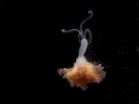(Press-News.org) Ultrafast supercomputers that operate at speeds 100 times faster than current systems are now one step closer to reality. A team of IBM researchers working on a U.S. Defense Advanced Research Projects Agency (DARPA)-funded program have found a way to transmit massive amounts of data with unprecedentedly low power consumption.
The team will describe their prototype optical link, which shatters the previous power efficiency record by half at the Optical Fiber Communication Conference and Exposition/National Fiber Optic Engineers Conference (OFC/NFOEC) in Anaheim, Calif. March 17-21.
Scientists predict that the supercomputers of the future—so-called "exascale computers"—will enable them to model the global climate, run molecular-level simulations of entire cells, design nanostructures, and more. "We envision machines reaching the exascale mark around 2020, but a great deal of research must be done to make this possible," says Jonathan E. Proesel, a research staff member at the IBM T. J. Watson Research Center in Yorktown Heights, N.Y. To reach that mark, researchers must develop a way to quickly move massive amounts of data within the supercomputer while keeping power consumption in check.
By combining innovative circuits in IBM's 32-nanometer silicon-on-insulator complementary metal-oxide-semiconductor (SOI CMOS) technology with advanced vertical cavity surface emitting lasers (VCSELs) and photodetectors fabricated by Sumitomo Electric Device Innovations USA (formerly Emcore), Proesel and his colleagues created a power-efficient optical communication link operating at 25 gigabits per second using just 24 milliwatts of total wall-plug power, or 1 pJ/bit. "Compared to our previous work, we have increased the speed by 66 percent while cutting the power in half," Proesel says. "We're continuing the push for lower power and higher speed in optical communications. There will always be demand to move more data with less energy, and that's what we're working toward."
INFORMATION:
Proesel's presentation at OFC/NFOEC, titled, "35-Gb/s VCSEL-Based Optical Link using 32-nm SOI CMOS Circuits" will take place Monday, March 18 at 2 p.m. in the Anaheim Convention Center.
About OFC/NFOEC
For more than 35 years, the Optical Fiber Communication Conference and Exposition/National Fiber Optic Engineers Conference (OFC/NFOEC) has been the premier destination for converging breakthrough research and innovation in telecommunications, optical networking, fiber optics and, recently, datacom and computing. Consistently ranked in the top 200 tradeshows in the United States, and named one of the Fastest Growing Trade Shows in 2012 by TSNN, OFC/NFOEC unites service providers, systems companies, enterprise customers, IT businesses, and component manufacturers, with researchers, engineers, and development teams from around the world. OFC/NFOEC includes dynamic business programming, an exposition of more than 550 companies, and cutting-edge peer-reviewed research that, combined, showcase the trends and pulse of the entire optical communications industry.
OFC/NFOEC is managed by the Optical Society (OSA) and co-sponsored by OSA, the Institute of Electrical and Electronics Engineers/Communications Society (IEEE/ComSoc), and the IEEE Photonics Society. OFC/NFOEC 2013 takes place March 17 – 21 at the Anaheim Convention Center in Anaheim, Calif. For more information, visit http://www.ofcnfoec.org.
Ultra-high-speed optical communications link sets new power efficiency record
2013-03-12
ELSE PRESS RELEASES FROM THIS DATE:
New automated process simplifies alignment and splicing of multicore optical fibers
2013-03-12
New multicore optical fibers have many times the signal-carrying capacity of traditional single-core fibers, but their use in telecommunications has been severely restricted because of the challenge in splicing them together-- picture trying to match up and connect two separate boxes of spaghetti so that all of the noodles in each box are perfectly aligned. Now, a new splicing technique offers an automated way to do just that, with minimal losses in signal quality across the spliced sections. The method will be described at the Optical Fiber Communication Conference and ...
Penn study: Financial incentives affect prostate cancer treatment patterns
2013-03-12
Philadelphia - According to a new study by researchers at the Perelman School of Medicine at the University of Pennsylvania, prostate cancer patients of urologists who own expensive radiation equipment are more likely to receive radiation treatment in lieu of surgery than patients treated by urologists without an ownership stake in the equipment. The study, now available online in the Journal of Urology, found that integrated prostate cancer centers (IPCCs), where urology and radiation oncology practices are combined, use expensive radiation-based treatments at higher rates ...
Mystery of 'zombie worm' development unveiled
2013-03-12
How do bone-eating worms reproduce? A new study by Norio Miyamoto and colleagues from the Japan Agency for Marine-Earth Science and Technology sheds light on this question through a detailed observation of the postembryonic development and sexual maturation of Osedax worms, also known as "zombie worms." These worms typically inhabit vertebrate bones on the seafloor. The study is published online in Springer's journal Naturwissenschaften - The Science of Nature.
Osedax is Latin for "bone-devourer," which refers to how the worms bore into the bones of whale carcasses to ...
Neural 'synchrony' may be key to understanding how the human brain perceives
2013-03-12
Despite many remarkable discoveries in the field of neuroscience during the past several decades, researchers have not been able to fully crack the brain's "neural code." The neural code details how the brain's roughly 100 billion neurons turn raw sensory inputs into information we can use to see, hear and feel things in our environment.
In a perspective article published in the journal Nature Neuroscience on Feb. 25, 2013, biomedical engineering professor Garrett Stanley detailed research progress toward "reading and writing the neural code." This encompasses the ability ...
4 dinosaur egg species identified in Lleida
2013-03-12
A study headed by the Miquel Crusafont Catalan Palaeontology Institute has for the first time documented detailed records of dinosaur egg fossils in the Coll de Nargó archaeological site in Lleida, Spain. Up until now, only one type of dinosaur egg had been documented in the region.
The archaeological site in Coll de Nargó containing dinosaur eggs lies some 8 kilometres to the west of the town that bears the same name in the province of Lleida. This region is home to different types of geological formations, including the Areniscas de Arén Formation and the Tremp Formation, ...
Does expressing anger on online rant-sites make you feel better or worse?
2013-03-12
New Rochelle, NY, March 12, 2013—Little is known about the value and emotional consequences of expressing anger on the Internet. Rant-sites provide an outlet for anonymous, angry outbursts. How people feel after reading and writing rants and the effects of this behavior is explored in an article in Cyberpsychology, Behavior, and Social Networking, (http://www.liebertpub.com/cyber) a peer-reviewed journal from Mary Ann Liebert, Inc., publishers (http://www.liebertpub.com). The article is available online on the Cyberpsychology, Behavior, and Social Networking (http://www.liebertpub.com/cyber) ...
Young pigs prefer traditional soybean diet
2013-03-12
Des Moines, IA – Pigs aren't known for being picky, but new research shows they avoid bitter tastes when they can.
In a new study of nursery pig diets, researchers from the University of Alberta offered pigs different amounts of soybean meal, napus canola meal and juncea canola meal. They found that pigs ate more soybean meal when given a choice.
Napus canola meal and juncea canola meal come from rapeseed and mustard greens, respectively. Canola meals are less expensive than soybean meal. If producers can replace soybean meal in swine diets, they could produce pork ...
Updated 'stereo EEG' workflow simplifies planning of epilepsy surgery
2013-03-12
Philadelphia, Pa. (March 12, 2013) – For patients with "drug-resistant" epilepsy requiring surgery, an updated stereoelectroencephalography (SEEG) technique provides a more efficient process for obtaining critical data for surgical planning, according to a study in the March issue of Neurosurgery, official journal of the Congress of Neurological Surgeons. The journal is published by Lippincott Williams & Wilkins, a part of Wolters Kluwer Health.
"SEEG is a safe and accurate procedure for invasive assessment of the epileptogenic zone," according to the new report by Dr. ...
Some bacteria may protect against disease caused by stomach infection
2013-03-12
Half of the world's human population is infected with the stomach bacteria called Helicobacter pylori, yet it causes disease in only about 10 percent of those infected. Other bacteria living in the stomach may be a key factor in whether or not H. pylori causes disease, according to a new study led by scientists at the University of California, Santa Cruz.
"People tend to think of the stomach as a relatively sterile environment, but it's actually populated with microbes," said Karen Ottemann, professor and chair of microbiology and environmental toxicology at UC Santa ...
Nearly a third of antibiotic prescriptions for dialysis patients inappropriate
2013-03-12
Patients who receive hemodialysis are at a significant risk of developing infections, a leading cause of hospitalization and death in this patient population. A new study highlights the need to improve antibiotic use in outpatient dialysis facilities as data shows nearly a third of antibiotic prescriptions are deemed inappropriate. The study is published in the April issue of Infection Control and Hospital Epidemiology, the journal of the Society for Healthcare Epidemiology of America.
The United States Renal Data System reported that from 1993 to 2010, the number of ...





